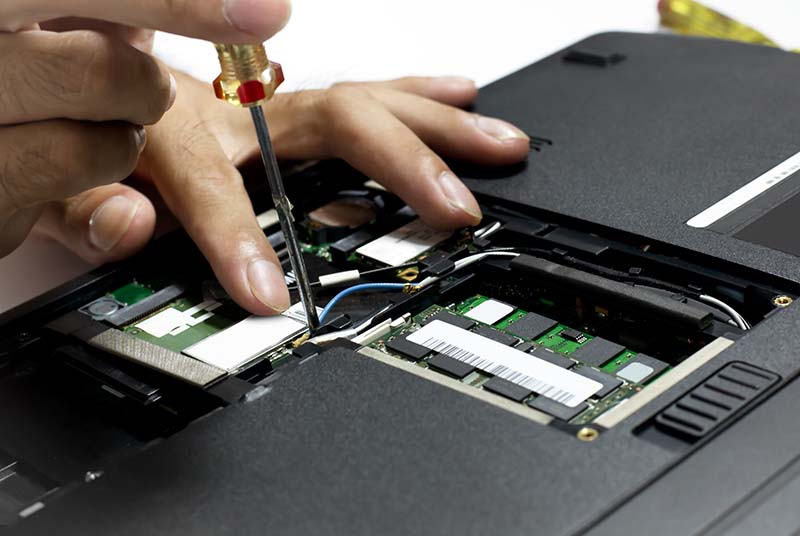
The new Carbon Loop Report from SK Tes is built to give OEMs granular details about the emissions avoided – and created – during the ITAD process. | Lorez/Shutterstock
Gone are the days where the amount of e-scrap processed was reported to OEMs in terms of weight in elephants or the number of times it could circle the globe. For SK Tes, the future is third-party verified reporting that factors in energy use, recycling rates and disposition channels to produce Scope 3 avoided emissions data.
The Carbon Loop Report is designed for Global 2000 companies, OEMs, energy and utility companies and hyperscale data center operators, according to an Oct. 3 press release, providing detailed information about the emissions created and avoided during the ITAD process. It covers over 50 types of IT assets, and includes site specific emissions data.
Eric Ingebretsen, chief commercial officer of global ITAD firm SK Tes, told E-Scrap News that the company “knew that we needed to” create a serious reporting tool, as client tastes and demands started to shift.
“Up until probably somewhere between three and five years ago, depending how you look at it, clients were really more looking to check a box” with sustainability reporting, he said, which led to the elephant-equivalent weights. But things have changed.
“Sometime in the last five years, clients started taking it more seriously,” he said. “They definitely wanted more reporting, particularly the OEMs, and they wanted better visibility into it.”
The sustainability team at SK Tes started working on building a report that would be useful, meaningful and verified.
“We said OK, we have to come up with something that relates what we do for them and translates that into meaningful metrics on their side,” Ingebretsen said. “And beyond that, we have to have it third-party validated, because if it’s not, if it’s just us saying that, that doesn’t really go a long way” with the global companies.
That verification is “the real magic,” Ingebretsen said, and what sets the company apart.
In building the Carbon Loop report, SK Tes started by focusing on avoided emissions. Then they worked backward to decide what data was needed to build that metric and collect it.
“It was a good bit of work to come up with all the methodology and to capture all the data,” Ingebretsen said. “It’s a fairly significant exercise when you’ve got the scale of SK Tes and you’ve got 40 locations around the world. We’re tracking logistics cost, energy costs, energy usage, distance traveled, the type of trucks used and everything like that.”
Clients can choose the cadence at which they receive reports, Ingebretsen said: at the end of each job, quarterly, annually, or whatever frequency is preferred.
“We intentionally made it pretty flexible,” he said. “That was kind of an evolution on our side.”
So far, most clients seem to prefer quarterly or annually, he added, as that’s when they are looking to build their own reports.
SK Tes will continue to build out the Carbon Loop report to suit clients’ needs, Ingebretsen said, in a collaborative process.
“We’re fortunate to have pretty large relationships with some of the world’s biggest companies,” he said. “There’s some very high-powered sustainability professionals, and we think we can learn from them.”
“It’s going to be a journey that we’re going with our customers on together,” he added, especially as interest in sustainability ramps up. By bringing third-party verified data to the table, SK Tes believes it can build stronger business relationships via added value.
Ingebretsen noted that he’s watching carefully to see if the rest of the industry leans in to this type of reporting, but “it feels like it’s the beginning.”
“The sustainability push from our customers and the engagement level is as high as ever,” he said. “It doesn’t feel like it’s a trend or a fad or anything. It feels like the engagement is very serious.”